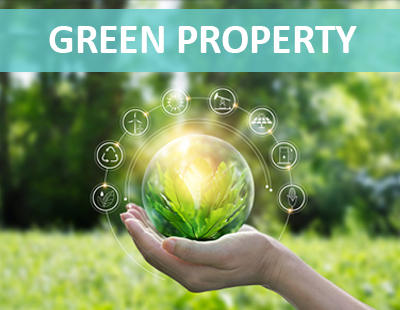What does net-zero really mean?
The term “net-zero” carries within it the message that even if all efforts are made to reduce human-produced carbon dioxide and other planet-warming gases, if renewables replace coal and other fossil fuels, and even if green hydrogen is scaled up massively, certain sectors for which these solutions are somewhat impractical, such as aviation or farming, will still produce carbon emissions. Emissions that can’t otherwise be avoided will need to be removed from the atmosphere via solutions such as direct air capture of CO2, or by nature-based solutions, for example, tree planting.
The extent of global warming is proportional to the amount of carbon dioxide that is added to the atmosphere. Thus, to stabilize climate change, net GHG emissions need to fall to zero, i.e., net-zero.
The expression comes from an Intergovernmental Panel on Climate Change (IPCC) report in 2018 that called for capping the warming of the planet to below 1.5 degrees Celsius above the pre-industrial average temperature in an attempt to avoid the worst impacts of climate change, such as (even more) extreme weather and potentially disastrous increases in sea levels.
Achieving this will be no small feat as temperatures today are already one degree Celsius above the pre-industrial level and continue to climb, driven by 51 billion metric tons of GHGs emitted worldwide each year. To achieve the temperature goal, the IPCC estimated that global carbon dioxide emissions must fall by about 45 percent by 2030 and to net-zero by 2050.
Many countries and regional blocs, including the U.S., UK, and the European Union (EU), have committed to reaching net-zero by 2050; China targets 2060. Some nations have made the commitment legally binding. Meanwhile, many businesses have declared their intentions to meet this goal by mid-century.
A net-zero world by mid-century
Our descendants will live in a world that will be a very different place from how it is today, with wholesale changes in their homes, modes of transport, and the landscape that surrounds them.
Decarbonized homes
Homes will likely receive 95 percent of their electricity from wind and solar versus some 40 percent in 2020. Most fossil-fuel-powered furnaces and boilers will very likely be replaced by heat pumps.
Heat pumps are devices powered by electricity that extract heat from the air or ground to warm a fluid that is compressed to boost the temperature. In effect, they operate like a refrigerator in reverse.
Though the technology has been in use for some time, there are impediments to scaling it up. Heat pumps are refrigerator-sized, while installation can be costly and disruptive. Still, nearly 20 million households purchased heat pumps in 2019, according to the International Energy Agency (IEA), meeting five percent of global home heating demand. The IEA estimates this share needs to triple by 2030 to meet net-zero goals.
Innovation is needed to reduce the size of the units while offering a cooling option as well as heating.
Policy support will also be needed to speed up adoption of this new technology. In the UK, from 2025, gas-fired boilers will be banned in newly built homes, while the installation of new replacement gas boilers in existing houses will be prohibited by the mid-2030s. To encourage the use of heat pumps, the UK government is offering a number of grants to households.
Homebuilding may also see big changes. Either the key raw materials used today, steel and cement, will be processed differently, or substitutes will have to emerge.
The steel and cement industries are massive CO2 emitters, each accounting for roughly seven percent of total global emissions, according to the IEA. “Greening” these heavy industries will be important to achieve net-zero.
Several emerging technologies, which are close derivatives of well-understood and commercial processes used today, could yield significant emissions reductions in the medium term. In the steel industry, pilot programs are using hydrogen to complement or replace coal in the high-temperature combustion process.
Meanwhile, feasibility studies suggest the use of hydrogen could substantially reduce the amount of carbon that is emitted from a cement kiln. At the same time, it appears mixing carbon dioxide with the water used to cure concrete can add usefully to its strength, meaning less cement can be used while simultaneously locking away the carbon in the concrete.
Engineered timber frames for buildings are another innovation that will increasingly be used to replace steel and cement. Cross-laminated timber (CLT) is produced by glueing planks of wood together, layering the grain of the wood at right angles. CLT was first used in a high-rise building in Vancouver in 2017, and other skyscrapers have made use of it since.
Window panes could even be made of wood. Swedish scientists found ways to extract pigments from wood, resulting in a transparent material that can be used much like glass but weighing less and insulating more.
Finally, roofs will increasingly be covered by solar panels or vegetation to provide a natural form of insulation and reduce energy consumption.
Transformed transport
It’s widely expected that electric vehicles (EV) will be ubiquitous, but their capabilities will likely be far more efficient than today’s models.
For one, an EV that is not in use may feed energy back to the grid via two-way charging points. In this way EVs can act as an aggregated megabattery, helping the grid offset the inevitable vagaries of wind and solar power. After all, cars are idle most of the time and a large amount of battery power is unutilized.
It’s also likely that wireless charging technology will dramatically evolve, both with respect to home wireless chargers as well as the possibility of charging an EV battery even as the vehicle is being driven.
While electric trains have been around for decades, diesel engines remain the most pervasive power source and are ripe for replacement. South Korea already operates electric multiple unit trains, and it intends to phase out all of its diesel passenger trains by 2029. French manufacturer Alstom is running a hydrogen-powered passenger train service in Europe, which it expects to roll out more widely over the next several years. Meanwhile, Canadian Pacific Railway has put eight hydrogen-powered freight locomotives into service to assess their viability.
In aviation, electric airplanes are not yet practical due to the huge onboard weight of batteries. Late in 2020, Airbus announced that hydrogen-fueled propulsion systems would be central to a new generation of zero-emissions commercial aircraft. The project is a flagship of the EU’s COVID-19 stimulus package that aims to green the bloc’s economy. Airbus believes its planes could be ready by 2035, though whether their use becomes commonplace will depend on hydrogen being produced at scale and without a large carbon footprint, challenges in their own right.
*Frédérique Carrier is the head of investment strategy at RBC Wealth Management
On Friday, we explore part two of Carrier's net-zero column, where she reviews some investment implications regarding net-zero.








.png)









Join the conversation
Be the first to comment (please use the comment box below)
Please login to comment